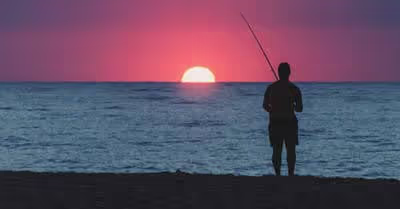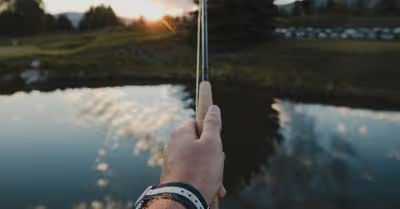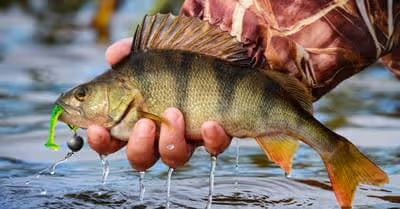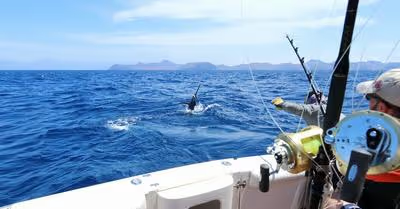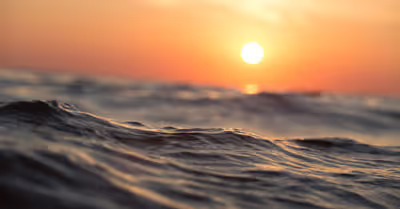Table of Contents
What Makes Fishing Line Go Bad?
There are, of course, several factors that can impact the longevity of your fishing line. Factors such as the type of water you’re fishing in, the temperature changes, UV light damage, and the way you store the line can all affect the lifespan of a fishing line. You should, however, keep in mind that the shelf life of a brand new fishing line that’s still in packaging is quite different from the lifespan of a fishing line on the reel. Again, the frequency of use can also affect the longevity of a fishing line.
A Fishing Line Still in Packaging
As we noted earlier, fishing lines do not come with expiry dates. They’ll, however, still go bad at some point even if they’re still in packaging. For instance, most monofilament lines will start going bad after four years in packaging and will become weak and lose their elasticity. Similarly, a fluorocarbon line will go bad after around seven years in packaging while a braided line might start going bad after ten years in packaging.
The problem, however, revolves around knowing how long or how old the fishing line at the store is. In most cases, we only assume the stores or their suppliers do due diligence and replace the lines after one or two years.
On the Reel
Things will obviously become different once you start using the fishing line. Well, this is because you’ll be exposing the line to various elements and a wide range of abuse. Whether its abrasion from rocks or various underwater structures, the fishing line that’s in use will become weaker and lose its elasticity over time.
You shouldn’t also underestimate the power of the sun. UV rays are generally very harmful to most products; fishing lines included. As such, leaving your fishing line exposed to direct sunlight for days on end will degrade your fishing line and it’ll become brittle and inflexible with time. The same goes out to frigid temperatures. For this reason, storing your line properly is of great importance in ensuring that your line lasts longer.
Water quality can also significantly affect the longevity of your fishing line. Saltwater is particularly damaging and will shorten the lifespan of your fishing line. It’s, therefore, recommended that you should always rinse your fishing line with fresh water once you get home from your fishing adventure and store it appropriately.
Does the Fishing Line Lifespan Depend on Its Type?
Simply put, the lifespan of your fishing line will largely depend on its type. Let’s take a closer look.
Monofilament – These types of fishing lines generally have the shortest shelf life. They’ll have the shortest lifespan given that they’re highly vulnerable to UV light and heat.
Fluorocarbon – They’re popular with anglers thanks to their transparency, which is typically unaffected by UV light. Although its memory can become a major issue in shortening its lifespan, it’s worth pointing out that a fluorocarbon can last four times longer than monofilament.
Braided Line – These are, without a doubt, the longest-lasting fishing lines. You can use them for several fishing seasons but they’ll weather the elements and will still serve as good as they did when they were brand new.
Signs that Your Fishing Line is bad
As a serious angler, you shouldn’t wait until your fishing line starts snapping or loses its elasticity to know that the line has gone bad. Well, here are signs that your line has gone bad and needs to be replaced.
A Tattered Line – This is perhaps the biggest indication that your fishing line has gone bad and should be replaced as soon as possible. Whether it happens as a result of fighting fish or as a result of getting tangled in underwater structures, a tattered line will have weak spots and this spells doom.
A Discolored Line – Having a discolored line is another outright indication that the line has gone bad and needs to be replaced. Discoloration generally occurs mainly because the line has been seriously exposed to the sun and other elements that significantly weaken the line.
Mildew Spots – Some lines, especially monofilament lines will get mildew spots on them and this is an indication that the line is going bad. Don’t wait until the worst comes to you; it could snap when your biggest ever catch has bitten.
When Should You Replace Your Fishing Line?
While the above-described signs are a requisite for you to replace your fishing line, most fishing lines have estimated functional lifespans that you should adhere to. Keep in mind that these are just estimates and so you can still consider replacing your line earlier if it has issues that are holding you back from enjoying your fishing escapades.
Monofilament
This is typically a single-strand fishing line generally made of nylon material. Although it has a functional lifespan of 3 years and a shelf life of 4 years, you should consider replacing it after 6 months of heavy fishing, 12 months of moderate fishing, and 18 months of occasional fishing.
Fluorocarbon
This type of line is generally unaffected by the UV rays as it’s typically invisible. But when it comes to its lifespan, it has a functional lifespan of 3 years and a shelf life of 7 years. You should, therefore, consider replacing it after 6 months of heavy fishing, 18 months of moderate fishing, and 2 years of occasional fishing.
Braided Line
It’s normally the most expensive and strongest line, which makes it ideal for trolling bass. With a shelf life of up to 10 years and a functional lifespan of 5 years, you can consider replacing it after 1 year of heavy fishing, 2 years or moderate fishing, and 3 years of occasional fishing.
How to Prolong the Lifespan of Your Fishing Line
The best way to prolong the lifespan of your fishing line is by storing it properly. When not out on the water, you should never leave your fishing line lying aimlessly in the backyard. Instead, make sure that you rinse it with fresh water immediately after your fishing trip and store it in the house under moderate temperature. Keep in mind that UV rays are the biggest enemy of your fishing line, so you should store it in a dark room to prevent it from UV damage.
You should also inspect your fishing line regularly before every fishing trip. Well, it’s better to detect any sort of damage while still at home than when out on the water. You should, therefore, check for abrasions, UV damage, knot strength, and memory.
How to Dispose of Your Old Fishing Line Properly
As anglers, we should all be responsible to ensure that our unwanted fishing gear does not end up in landfills as they can damage the environment. The best thing to do is to ensure that your unwanted old fishing line ends up in a recycle bin where they can be collected for recycling.
Conclusion
Technically speaking, fishing lines do not have expiry dates but they’ll definitely go bad over time. When this happens, it will not work efficiently and will leave you ruing your missed chances. It’s, therefore, important that you periodically replace your lines to prevent it from snapping at the critical moment: when you’re just about to land your biggest trophy.
Tight lines!
Recent Articles



